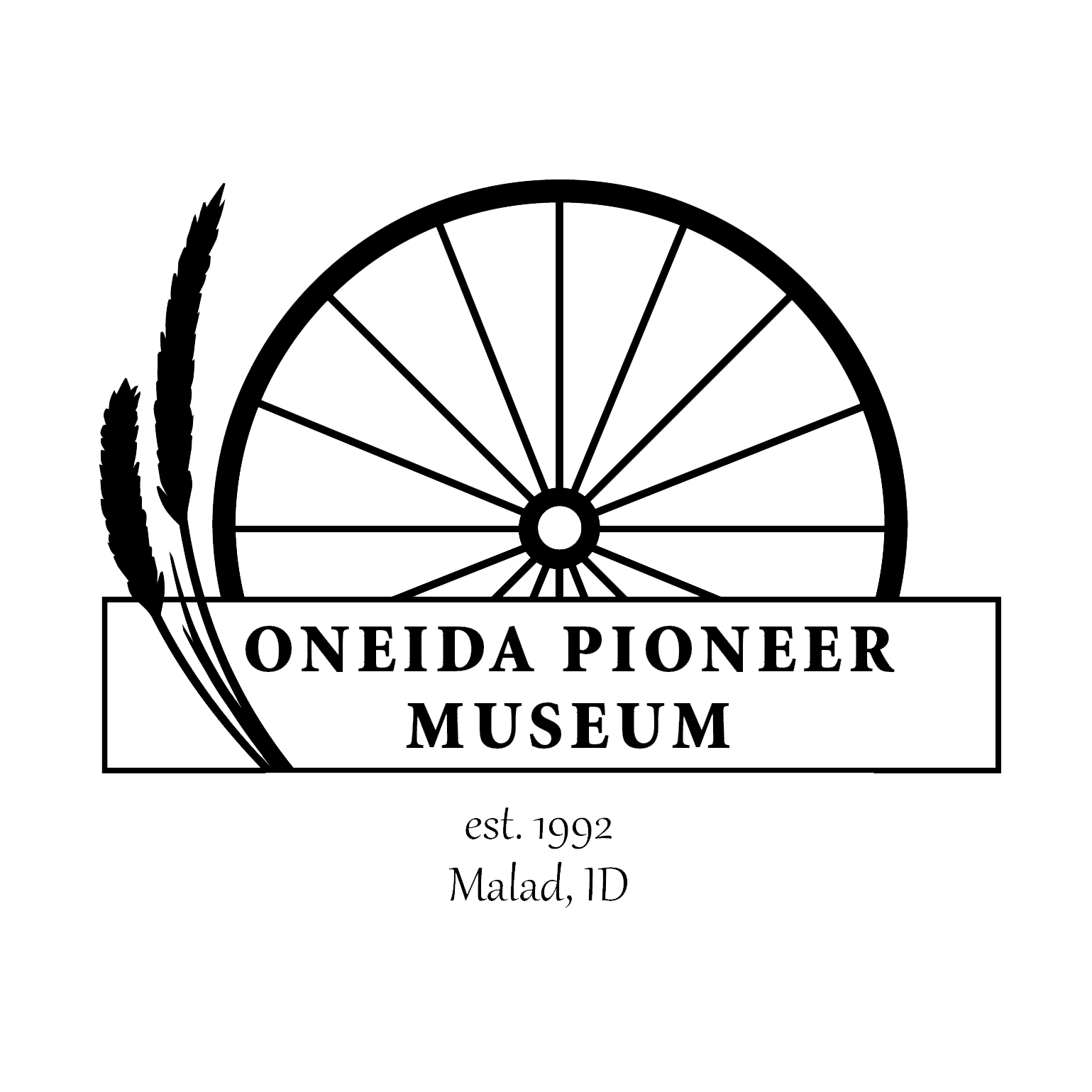More History
Malad’s first museum was housed in an old log house on the corner of Bannock Street and 200 West. In 1935 Hattie Morgan collected a few of her own mementos and, with the aid of her friends in the Native Daughters of the Idaho Pioneers, put together a worthwhile display of artifacts and antiques. The old log cabin was her family homestead and was built by her father, physician and state legislator, Dr. Joseph Morgan. Miss Morgan was a noted historian and well known for her efforts to preserve her heritage. She was the activating energy in the organization of the NDIP. At one time there were 14 NDIP stations in Idaho with three being formed in the Malad Valley.
The NDIP stated that any female over 30 years of age and a lineal descendant of an Idaho pioneer coming to the area before 1890 (when Idaho became a state), was eligible to join the group. One of the primary goals of the NDIP was the gathering of histories of their ancestors and the preservation of antiques.
When the cabin was torn down to make way for the county hospital, the relics were removed to basements and storage sheds.
In the spring of 1963, Malad began planning for a town centennial celebration for the following summer. Anella Jones Price was the president of the NDIP at the time and spearheaded the gathering of the artifacts for an exhibit in the Malad Lions Den during the celebration.
In 1965 J.N. Ireland Bank had moved to a new building on Bannock Street and offered their former location, the “flat iron” front of the Evans Co-op building, as a place for the collection to be displayed. The collection remained in the “flat iron” front of the Evans Co-op Building until 1975 when Evans Co-op was going to be remodeled and enlarged. At that time, the relics were threatened with being homeless again.
A new hospital had been built by then, and the old hospital (owned by Oneida County) was suggested as a place to store the items. Don Evans and his crew provided the manpower and trucks for the move. Many items from the Evans’ Co-op store, including antique furniture and clothing, were given to the NDIP at this time. The members of NDIP spent many hours cleaning, labeling, and arranging artifacts and building shelves to better display the treasures they had collected through the years. The Daughters of the Utah Pioneers gave financial assistance and many hours of volunteer work in helping make the museum available to the public.
In June 1990, a new organization was formed to maintain and be responsible for the museum. The Oneida County Relic Preservation and Historical Society had as its primary goal the relocation of the museum to a downtown, ground-floor location more easily accessible to the public. In 1989, a Gem Committee was selected by Malad City officials to create an Economic Development Committee in Malad City and Oneida County under the direction of the Southeastern Idaho Council of Governments (SICOG). Sandra P. Hess, the neice of Anella Price, was named chairperson and worked with city officials to put together a diversified committee to begin the Gem Community projects. One of the first goals in the committee’s action plan was to relocate the historical artifacts and information recounting the early history of the Malad Valley to a convenient location within the community. A Gem Community grant, funds allocated by Oneida County and Malad City, and the generous donation of the R.B. Davis Building by the R.B. Davis family, made the Oneida Pioneer Museum a reality.




